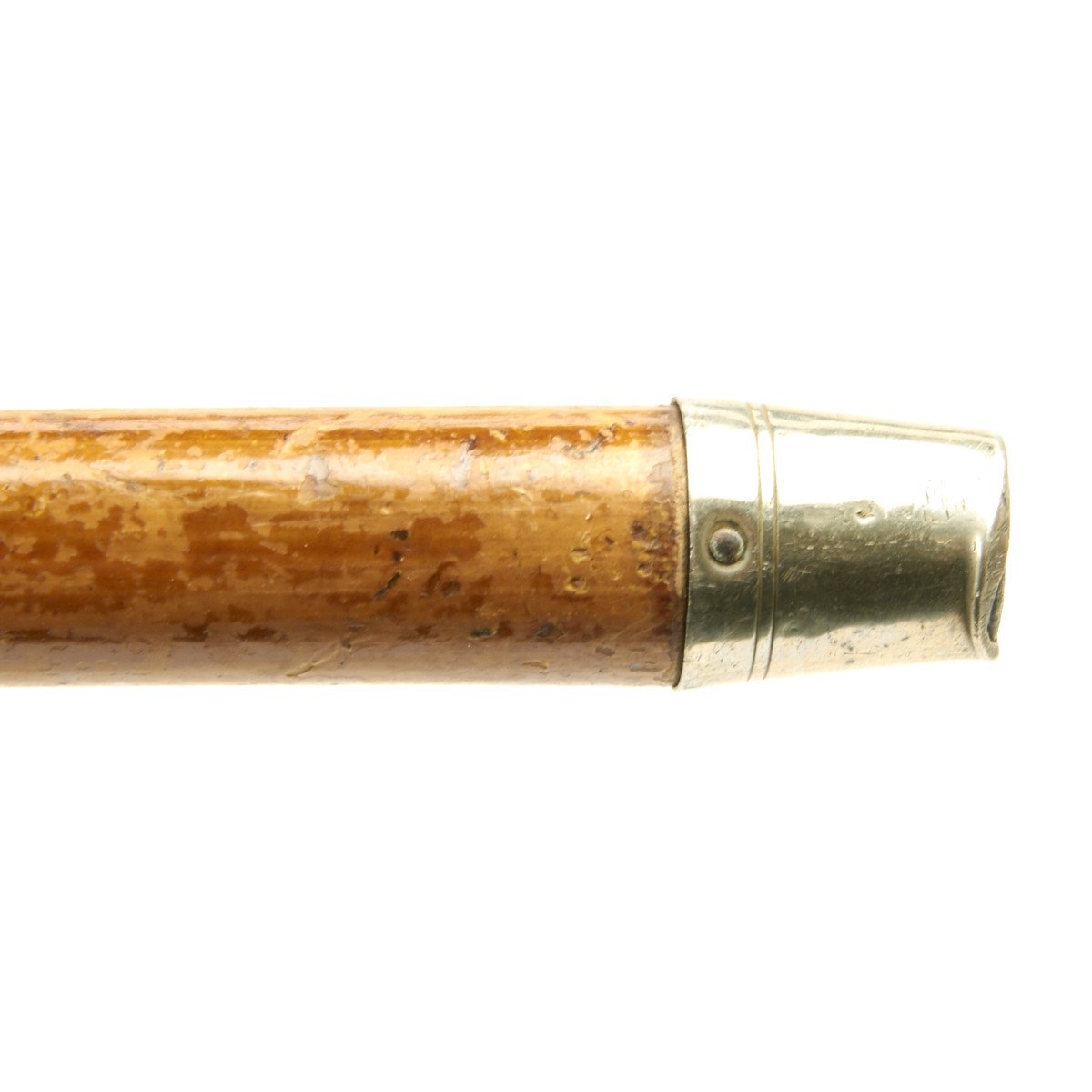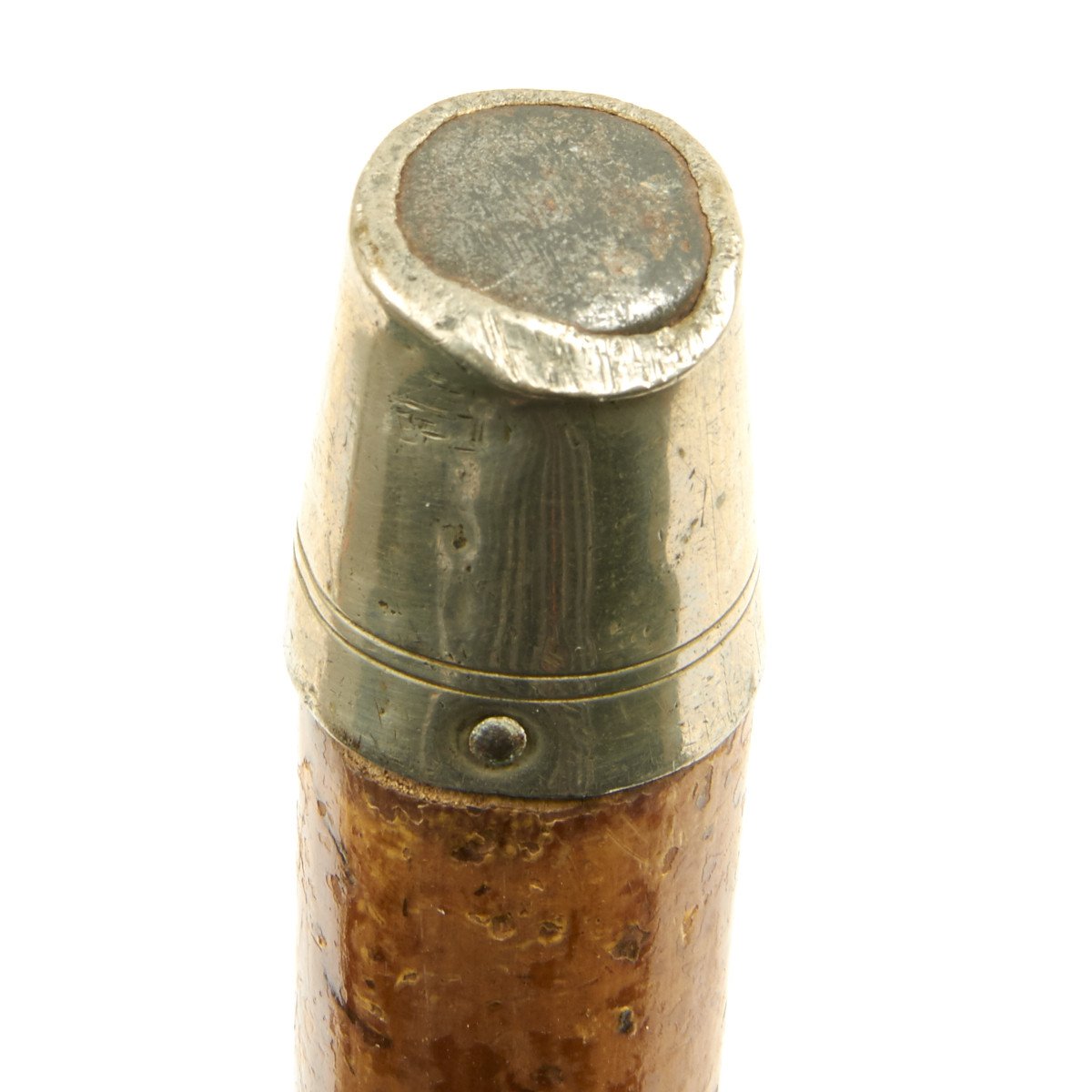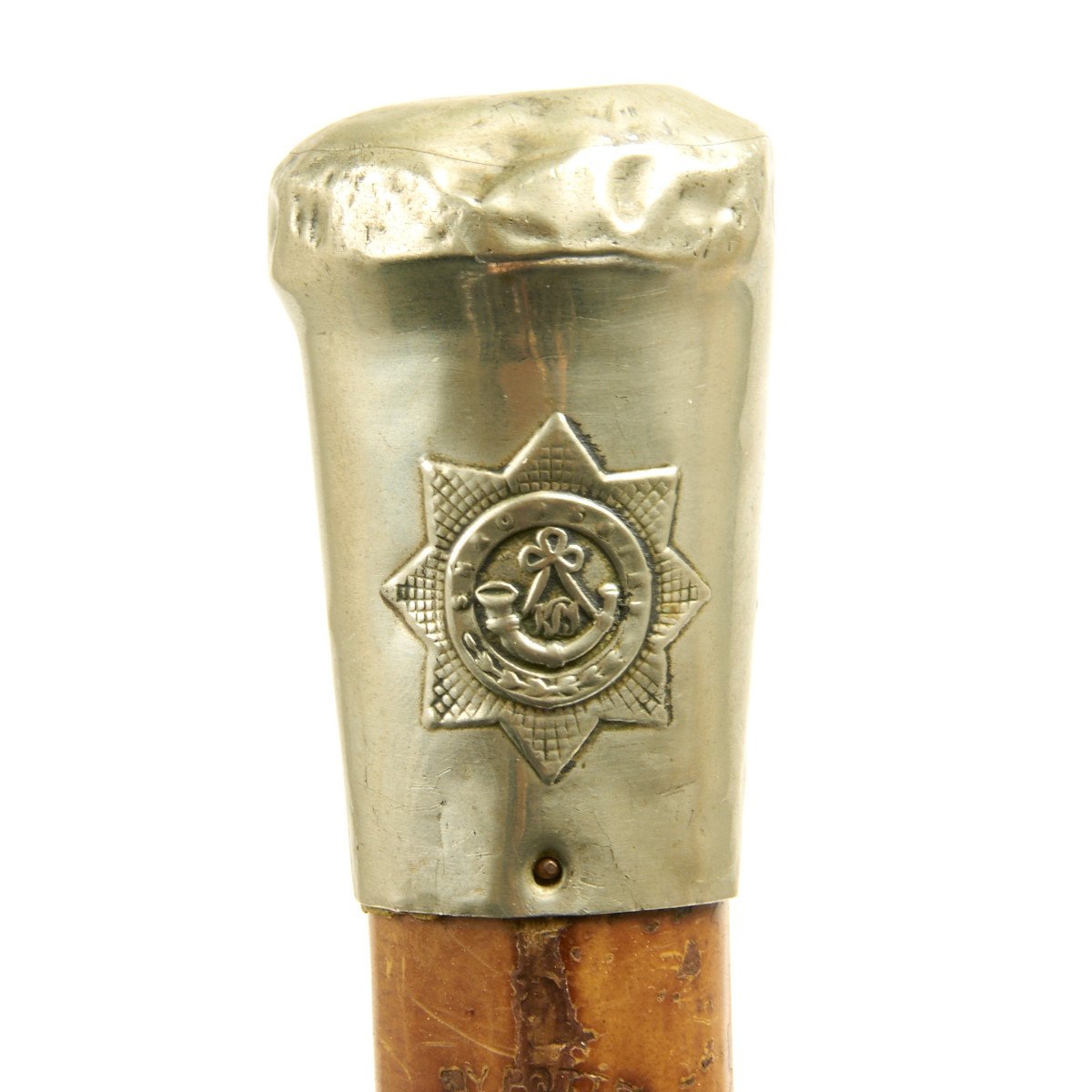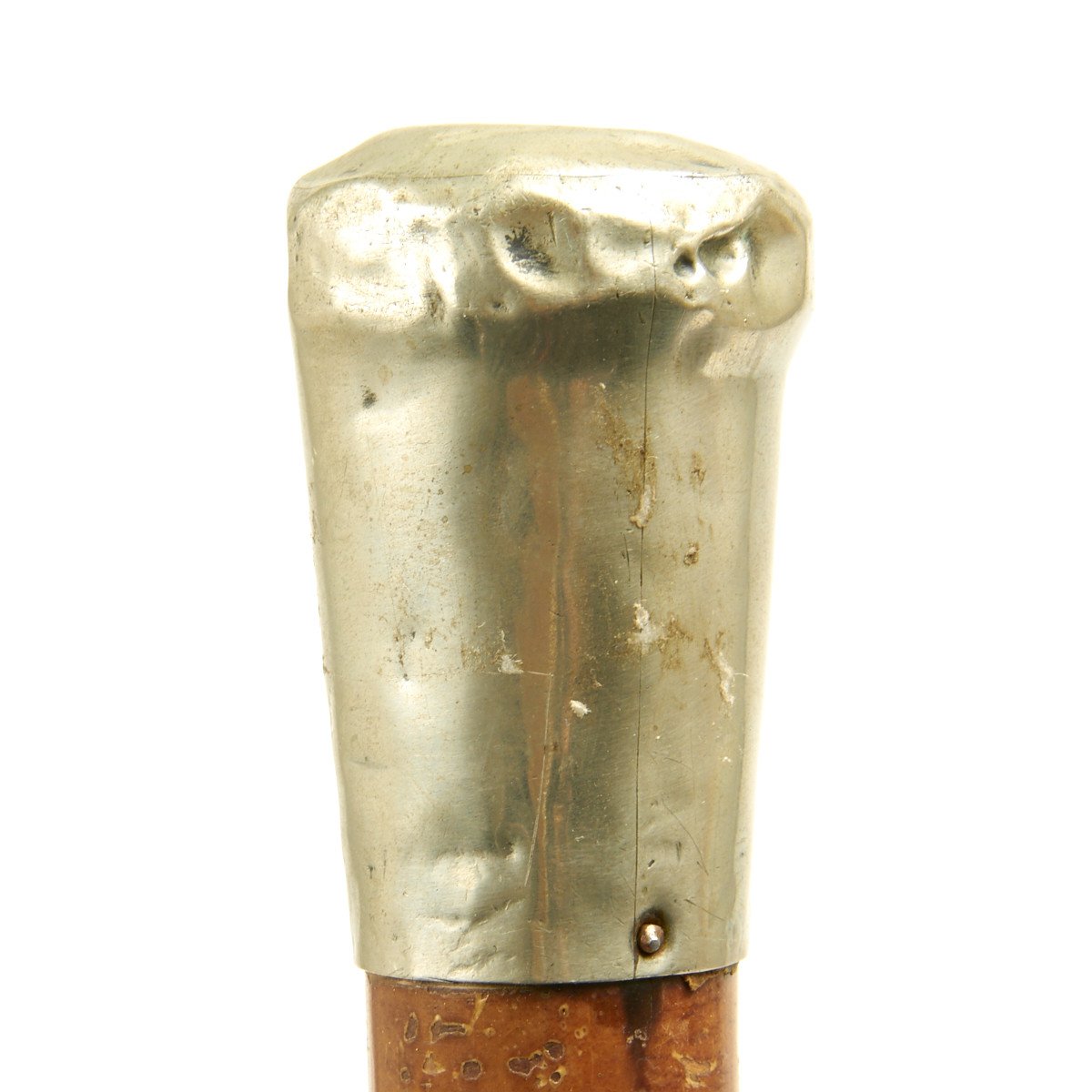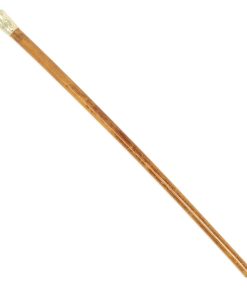Original British WWI Era King’s Shropshire Light Infantry Sergeant Cane Swagger Stick Original Items
$ 195,00 $ 78,00
Original Item: Only One Available. The King’s Shropshire Light Infantry (KSLI) was a light infantry regiment of the British Army, formed in the Childers Reforms of 1881, but with antecedents dating back to 1755.
The King’s Light Infantry (Shropshire Regiment) was formed on July 1, 1881, as the county regiment of Herefordshire and Shropshire as part of the Childers Reforms. It was renamed as The King’s (Shropshire Light Infantry) in March 1882.
The regiment was an amalgamation of the 53rd (Shropshire) Regiment of Foot and the 85th (King’s Light Infantry) Regiment of Foot, which became the regular 1st and 2nd Battalions. The 1881 reforms also redesignated the militia and rifle volunteers units within the regimental district as battalions of the regiment. Accordingly, the Shropshire Militia and Royal Herefordshire Militia became the 3rd and 4th (Militia) Battalions respectively, and the 1st and 2nd Shropshire Rifle Volunteer Corps became the 1st and 2nd Volunteer Battalions. The 1st Herefordshire (Herefordshire and Radnorshire) Rifle Volunteer Corps was also affiliated as a volunteer battalion, without change of title.
The KSLI served with distinction in the Anglo-Egyptian War, the Eastern Sudan, 188586 and the Second Boer War.
In 1908, as part of the Haldane Reforms, the two militia battalions were merged to form the 3rd (Special Reserve) Battalion and the 1st and 2nd VBs were merged to form the 4th Battalion Territorial Force. At the same time, the Herefordshire RVC became independent as the Herefordshire Regiment (TF).
First World War
Regular Army
The 1st Battalion landed at Saint-Nazaire as part of the 16th Brigade in 6th Division in September 1914 for service on the Western Front. The 2nd Battalion landed at Le Havre as part of the 80th Brigade in the 27th Division in December 1914 also for service on the Western Front.
Territorial Force
The 1/4th Battalion served in India before landing at Le Havre as part of the 159th Brigade in the 53rd (Welsh) Division in July 1917 for service on the Western Front. It made an important counter-attack against the Germans at Bligny in June 1918 during the Spring Offensive for which it was awarded the French Croix de Guerre. The 10th (Shropshire & Cheshire Yeomanry) Battalion landed at Marseille as part of the 231st Brigade in the 74th (Yeomanry) Division in May 1918 also for service on the Western Front.
New Armies
The 5th (Service) Battalion landed at Boulogne-sur-Mer as part of the 42nd Brigade in the 14th (Light) Division in May 1915 also for service on the Western Front. The 6th (Service) Battalion landed at Boulogne-Sur-Mer as part of the 60th Brigade in the 20th (Light) Division in July 1915 also for service on the Western Front. The 7th (Service) Battalion landed at Boulogne-sur-Mer as part of the 76th Brigade in the 25th Division in September 1915 also for service on the Western Front. The 8th (Service) Battalion landed in France as part of the 66th Brigade in the 22nd Division in September 1915 but sailed to Salonika in November 1915
Sergeant’s Sticks are a larger version of Swagger sticks most often associated with Officers who carried then under their right arm. Many years ago when officers were present on Battle fields it was to instruct the troops in the conduct and art of warfare not to actually engage in close combat.
To underline such intent many officers carried only a swagger stick on the Battle field which today seems utterly foolish. By the mid 19th century the senior NCOs, the Sergeants themselves intending to ape the officers began using the Sergeants stick. These were much larger, almost walking cane size, and can still be seen in Military parades today displayed as a sign of authority.
This fine example dates between anywhere between 1900 and the First World War (1918). It measures 34″ in overall length and has a silver plated top mount bearing an embossed regimental badge of the King’s Shropshire Light Infantry.
The Sergeant stick is made from high quality MALACCA cane with silver plated mounts both top and bottom. Far and away rarer than any Swagger stick, these are always hard to find. In fine condition showing a few dents to the silver top.
Fast Shipping with Professional Packaging
Thanks to our longstanding association with UPS FedEx DHL, and other major international carriers, we are able to provide a range of shipping options. Our warehouse staff is expertly trained and will wrap your products according to our exact and precise specifications. Prior to shipping, your goods will be thoroughly examined and securely secured. We ship to thousands clients each day across multiple countries. This shows how we're dedicated to be the largest retailer on the internet. Warehouses and distribution centres can be located throughout Europe as well as the USA.
Note: Orders with more than one item will be assigned a processing date depending on the item.
Before shipping before shipping, we'll conduct a thorough inspection of the items you have ordered. Today, the majority of orders will be delivered within 48 hours. The delivery time will be between 3-7 days.
Returns
The stock is dynamic and we cannot completely manage it because multiple stakeholders are involved, including our factory and warehouse. So the actual stock may alter at any time. It's possible that you may not receive your order once the order has been made.
Our policy is valid for a period of 30 days. If you don't receive the product within 30 days, we are not able to issue a refund or an exchange.
You can only return an item if it is unused and in the same state as the day you received it. You must have the item in its original packaging.
Related products
Uncategorized
Uncategorized
Uncategorized
Uncategorized
Australian WWII Owen MK1 Machine Carbine SMG Custom Fabricated Replica with Sling Original Items
Uncategorized
Uncategorized
Uncategorized
Uncategorized
Uncategorized
Uncategorized
Uncategorized
Uncategorized
Uncategorized
Uncategorized
Uncategorized
Angolan Rebel 1970s era 60mm Inert Display Mortar from Angolan Civil War Original Items
Uncategorized
Uncategorized

